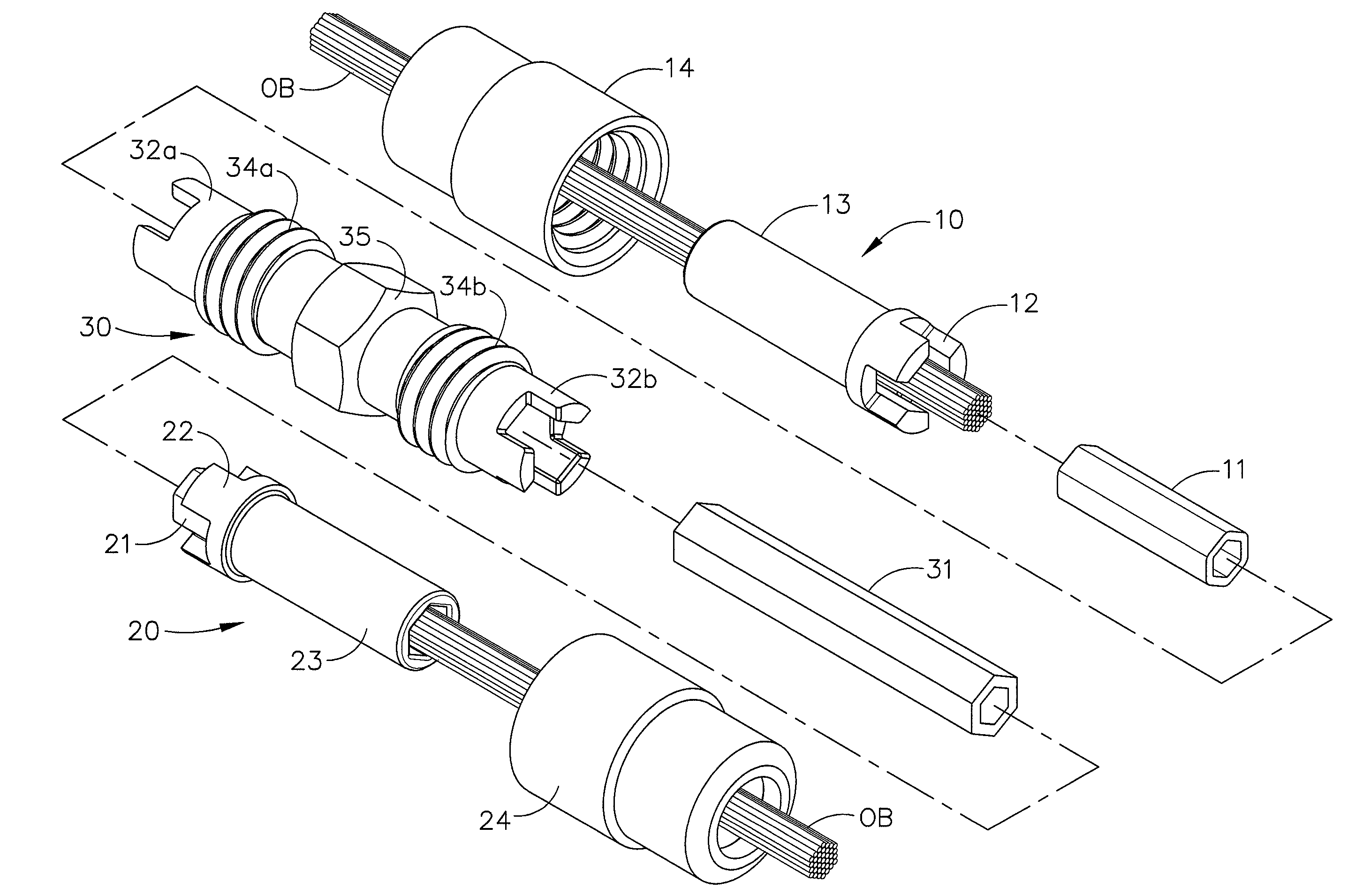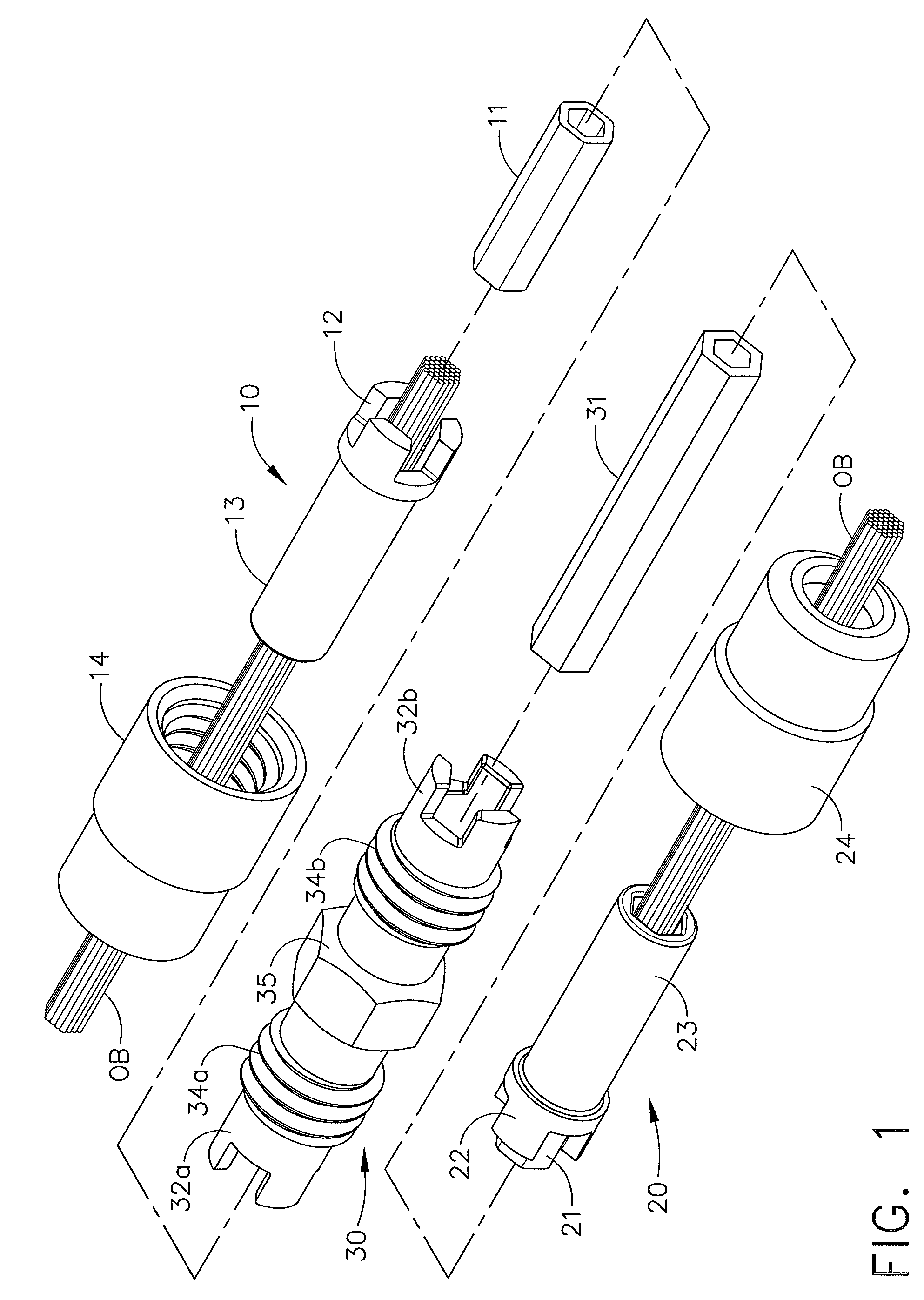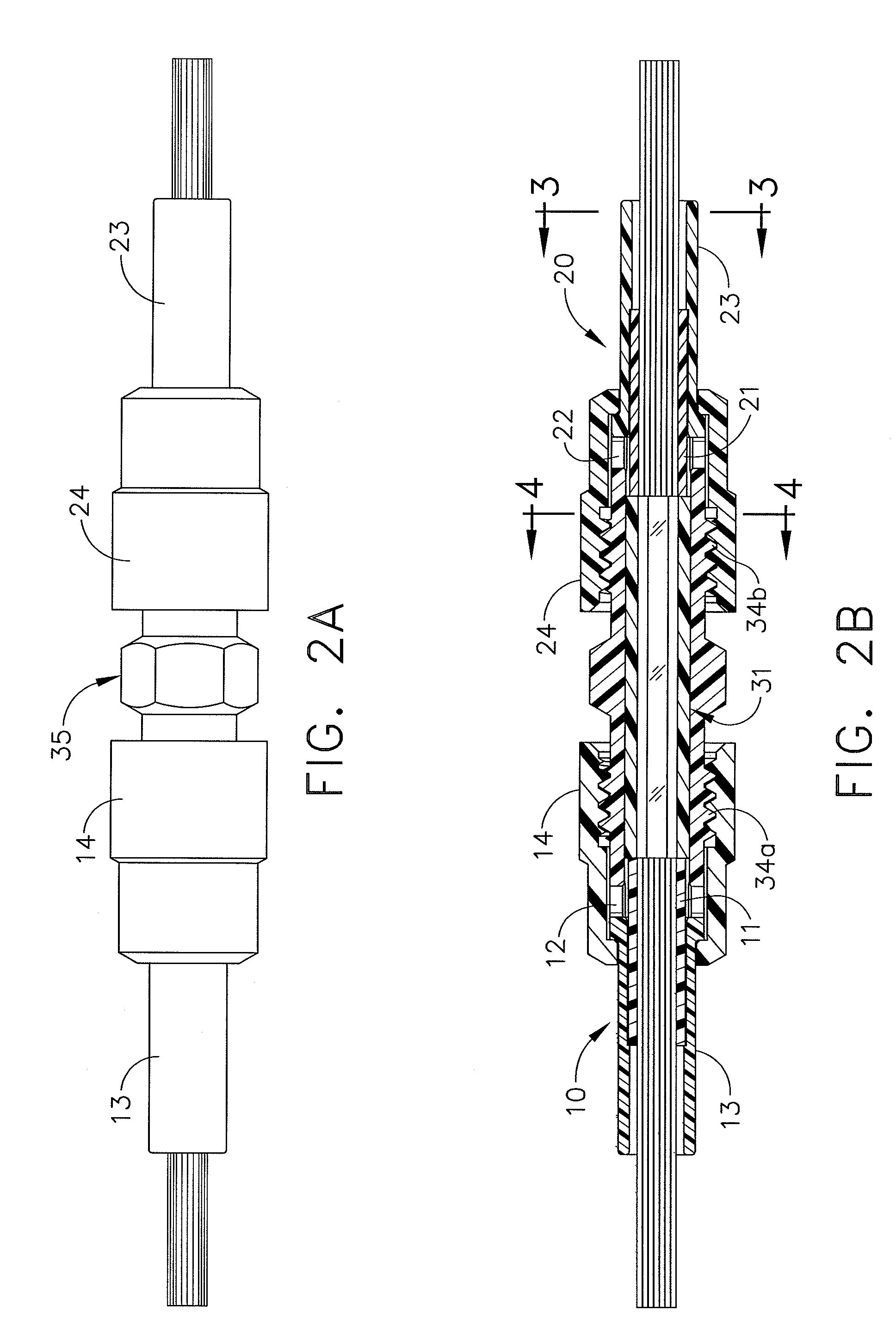All-plastic optical mini-connector
a mini-connector and all-plastic technology, applied in the direction of optics, instruments, optical light guides, etc., can solve the problems of affecting the optical transmission quality of the bundle, and affecting the optical transmission quality. , to achieve the effect of uniform light distribution across the interface between the ends of the optical fiber bundle, and ensuring the optical transmission quality
- Summary
- Abstract
- Description
- Claims
- Application Information
AI Technical Summary
Benefits of technology
Problems solved by technology
Method used
Image
Examples
Embodiment Construction
[0011]In the following detailed description, certain preferred embodiments are described as illustrations of the invention in a specific application or physical environment in order to provide a thorough understanding of the present invention. Those methods, procedures, components, or functions which are commonly known to persons of ordinary skill in the relevant art are not described in detail as not to unnecessarily obscure a concise description thereof. Certain specific embodiments or examples are given for purposes of illustration only, and it will be recognized by one skilled in the art that the present invention may be practiced in other analogous applications or environments and / or with other analogous or equivalent variations of the illustrative embodiments.
[0012]Referring to FIG. 1, an embodiment of an optical fiber connector is shown having a three component design of a first connector insert 10 for holding exposed ends of a bundle of optical fibers OB of a specified numbe...
PUM
 Login to View More
Login to View More Abstract
Description
Claims
Application Information
 Login to View More
Login to View More - R&D
- Intellectual Property
- Life Sciences
- Materials
- Tech Scout
- Unparalleled Data Quality
- Higher Quality Content
- 60% Fewer Hallucinations
Browse by: Latest US Patents, China's latest patents, Technical Efficacy Thesaurus, Application Domain, Technology Topic, Popular Technical Reports.
© 2025 PatSnap. All rights reserved.Legal|Privacy policy|Modern Slavery Act Transparency Statement|Sitemap|About US| Contact US: help@patsnap.com



